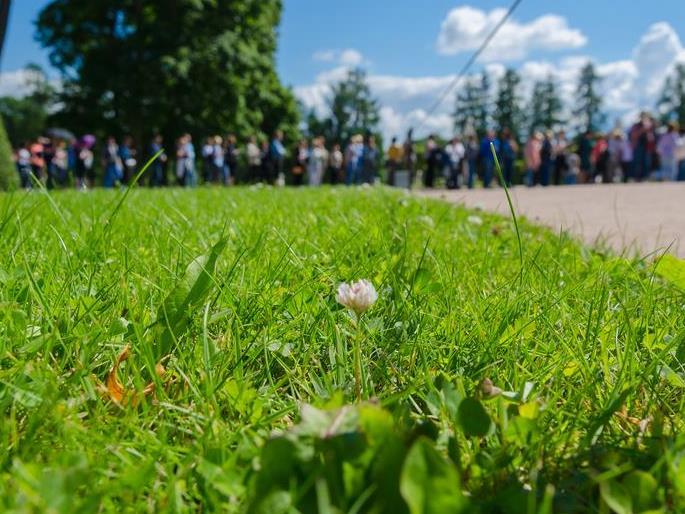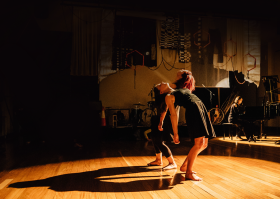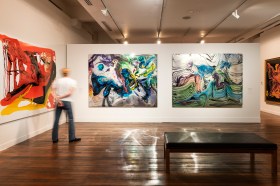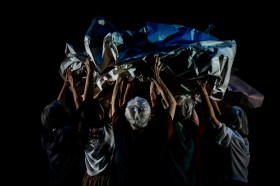Image CC shutterstock.
As a sector, we tend to think of Blockbusters as those exhibitions with the big tickets, big tourism and big traffic – the three T’s. But I have this compulsion to add an R in there.
Why should Blockbusters be the exclusive domain of the major galleries in our cities? There are many regional galleries that have proven that perception wrong. A good example is the current exhibition, René Magritte: The Revealing Image, Photos and Films at Latrobe Regional Galley in Morwell, Victoria.
Pitched as a ‘world-first exhibition’, it came about through a collaboration with the Magritte Foundation Belgium, and marks the 50th anniversary of the Belgian Surrealist’s death. This, however, is the part I love: ‘After its world-premiere in Morwell, it will travel to Hong Kong, North and South America, and back to Europe.’
Director Mark Themann told ArtsHub that the gallery had tracked a ‘1000 fold increase in social media exposure’ since the exhibition opened.
He continued: ‘Morwell is being featured and discussed in the national press, for its cultural offering – for something outside of the “run of the mill stereotypical ideas” of the Latrobe Valley. So whether we have thousands through the door, or not, the boost in reputation and change in perception is worth its weight in gold. We need to think long term.’
The exhibition features 130 original photographs by and of Magritte, his family, friends and fellow artists. It also includes eight self-made films that give a behind-the-scenes view of Magritte’s world. It is on show from 19 August to 19 November 2017.
Big name partnering opens the local door
Also taking an international tone and aiming big is the TarraWarra Museum of Art. Their current exhibition All that is solid … TarraWarra International 2017, curated by Director Victoria Lynn, who described it as ‘an imaginative and cutting-edge exhibition.’ It is showing 2 September – 12 November.
Lynn told ArtsHub: ‘It’s important that galleries in outer centres/inner regional areas present a balance of programs, which attract a variety of audiences. I believe that audiences like to be challenged. The TarraWarra International series was established to bring new developments in International and Australian contemporary art.’
The gallery also presented this year the ‘home grown blockbuster’ style survey on the work of modernist icon William Dobell, which drew substantial attendances.
Bendigo Art Gallery likewise has had an extraordinary run of success, thanks largely to positioning itself at the border of art appreciation and fashion obsession and the big buy-in show. First there was The White Wedding Dress in 2011, from the Victoria and Albert Museum in London, which drew an at-the-time record-breaking of 76,000 visitors.
But that record was truly smashed when Bendigo brought out the Grace Kelly: Style Icon, also from the V & A. Grace’s outfits attracted 228,000 viewers and was estimated to have earned $16.3 million in benefits for the Bendigo region. The trend was working, so in 2014 it partnered with the British Museum to present The Body Beautiful in Ancient Greece, and in 2016 is was a collaboration with Twentieth Century Fox that bought the Hollywood icon Marilyn Monroe to this regional Victorian town.

Forever Marilyn by Seward Johnson ©1996, 2011 The Seward Johnson Atelier, Inc. Based on the Photo by Bernard of Hollywood. Photo: Jim Marshall.
Themann said he doesn’t like the term blockbuster. Many regional gallery directors would agree – it is a out dated term fabricated to describe a kind of big gallery machine that has little relevance to these popular shows at the edges.
‘In the context of Morwell the Magritte show is having the following effect: Local artists, art lovers and those mildly curious about visual art are truly excited to see this show. They are amazed that this exhibition could be a possibility and become a reality, here in Morwell.’
He continued: ‘Schools from the region are starting to arrive at Latrobe Regional Gallery where they have been reluctant to visit, before. Locals are excited. We see visitors drive down from Sydney specifically for this show plus visitors from Townsville, Darwin, Perth and of course Melbourne. This benefits Morwell in the short term, with a longer term effect; a change in perception.
‘In tandem with this, Latrobe Regional Gallery is building a reputation and forging new alliances, which will enable us to work with more institutions and artists of note, into the future.’
Home grown blockbusters and collaborations
The Art Gallery of New South Wales has for a number of years toured the popular Archibald Prize. It is just as popular as Marilyn or Grace Kelly, Magritte and Picasso. Why? Because the fear of art is removed when something is familiar.
When the “Archie” first started touring it headed to one lucky Victorian gallery, which had a two-year stint at hosting it with a guaranteed audience drawcard. In 2012 and 2013 the Mornington Peninsula Regional Gallery (MPRG) showed it before that TarraWarra Museum of Art, and in 2014-2015 the Art Gallery of Ballarat landed the gig. This year it is Geelong. That touring demand across regional centers has continued to grow significantly, and through it an opening up of art engagement in the regions. To view this year’s tour dates and venues.
In an earlier article Mornington Director Jane Alexander told ArtsHub that close to 90,000 people visited the prize exhibition during the two years it was at MPRG. ‘A high proportion of those were people from our own community.’
The boost provided about an extra $250,000 in income directly to the Gallery, which allowed it to upgrade its old air-conditioning system and create new car parking facilities. But the value it provided to the region was much greater, an extra $4-5 million largely in food, beverage and accommodation income, according to Tourism Victoria.
Read: What the Archibald means for regional galleries
The increased profile and reputation of regional galleries has garnered more than just big shows and a spike in foot traffic and social media likes. The profile of these big name exhibitions has been a catalyst to put regional towns on an international radar, and that enables partnerships in many ways.
For example, earlier this year the Editor in Chief of New York based art journal Hyperallergic chose to visit Toowoomba instead of Melbourne. Visiting with him was artist, author, educator and curator Sharon Louden, who told ArtsHub: ‘I do a lot of research – it wasn’t random that I found Raygun Projects. I had a focus.’ In Louden’s view, Toowoomba, located about an hour west of Brisbane , was a hotbed of regional cultural activity.
Read: Why New York is interested in Toowoomba and not Melbourne
In a similar valuing of what is happening at the edges, internationally celebrated Irish born, New York and Berlin based photographer, Richard Mosse met up with Brisbane based Australian photographer Raphaela Rosella in Moree, in regional northern NSW.
Kim McConville explained: ‘What happens when the Director of a small not-for-profit arts organisation phones a world acclaimed international documentary photo artist who lives in New York and invites him to visit the remote northern NSW town of Moree – he agrees! And without much to do or whoha; he’s here!’
‘The bond was instant and mutual, bound by respect and compassion.’ McConville said.
Similarly Naomi Fallon, the Gallery Manager of Walkway Gallery in the tiny South Australian town of Bordertown, did not allow distance or size deter her in aiming bid.
She loaned a body of work from the Art Gallery of South Australia to present the self-titled exhibition Ben Quilty in 2016 – a kind of home-grown blockbuster that drew record crowds – well record for Bordertown.
‘After three days, we had smashed any previous record with two and a half thousand people coming through the doors in three days,’ Fallon told the ABC. She added that the gallery had to open its doors seven days a week to cope with the influx of people, who are travelling from as far as Melbourne and Adelaide.
‘There is always a risk when you bring contemporary work into a regional community, that people aren’t going to like it,’ said Fallon.
All these examples prove repeated that art can motivate and move communities. We have become better as a regional arts sector in collaborating with state institutions to activate their collections and to tour their blockbusters – a win win when it comes to accountability measures.
But mostly, the outcome of this new confidence is a stronger dissemination and boldness to embed culture in the everyday life – and by my measure, regional centres are doing that far better than our cities, proportionately.





